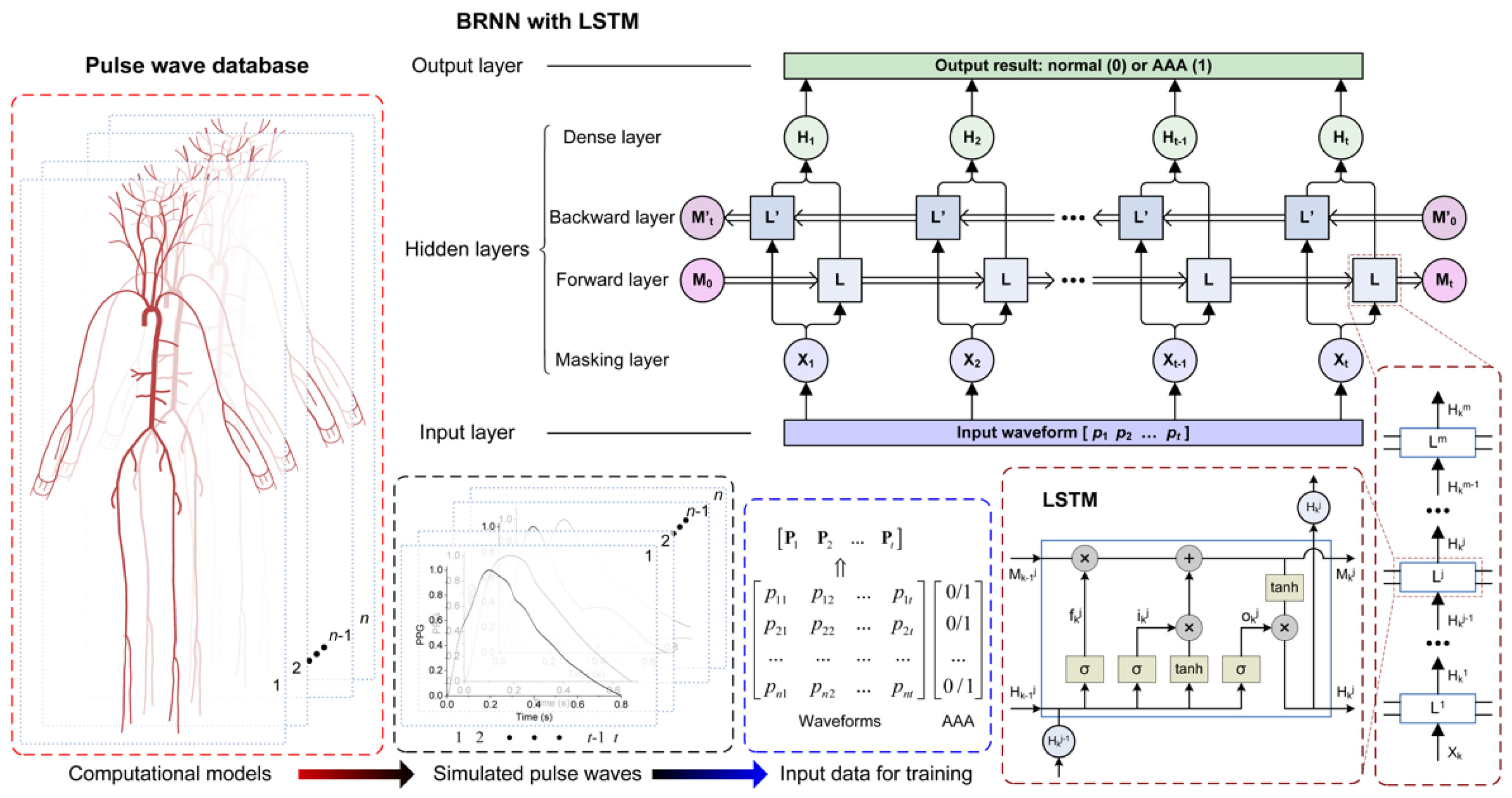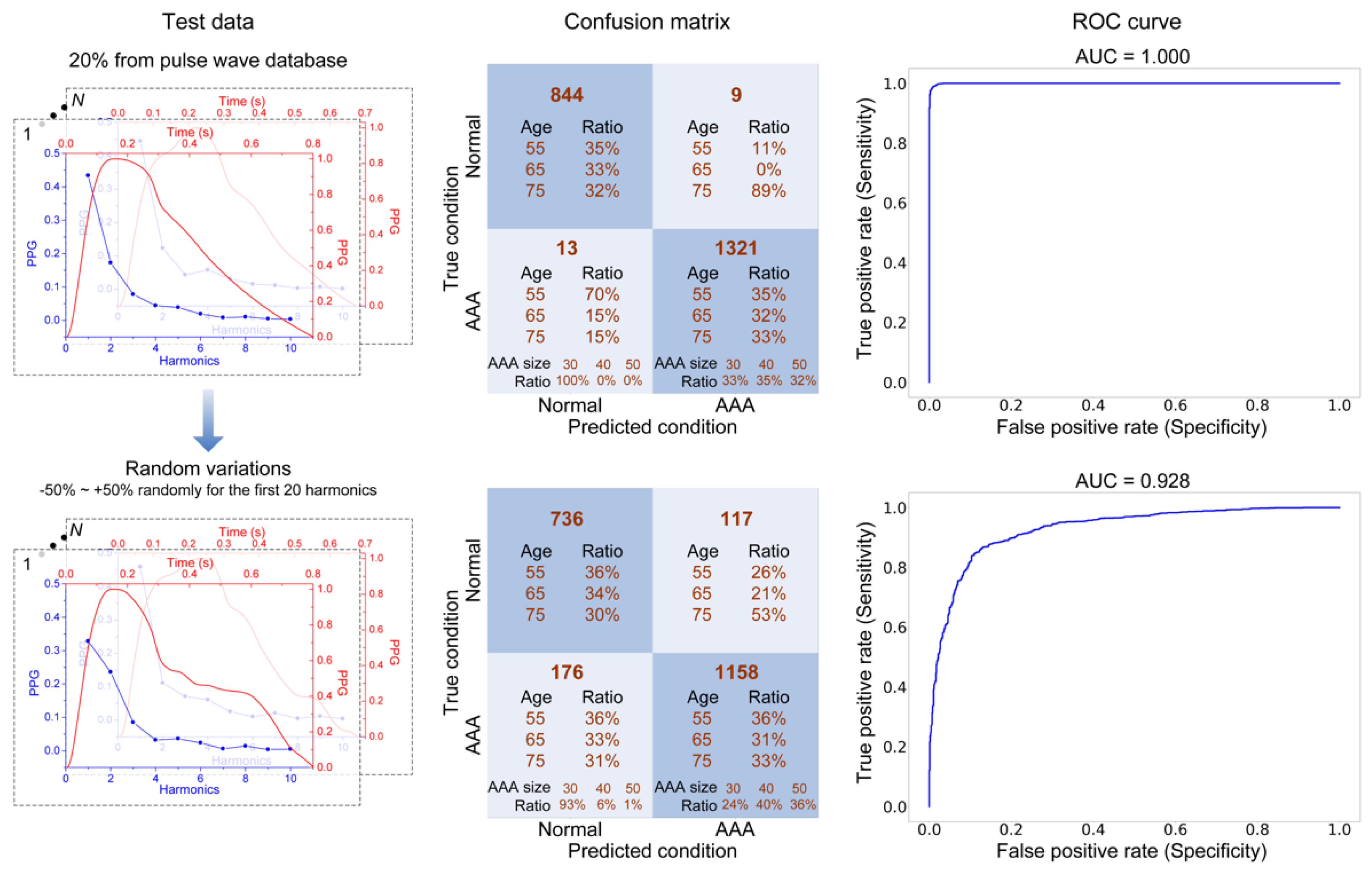Early Detection of Abdominal Aortic Aneurysms by Pulse Wave Analysis
An abdominal aortic aneurysm (AAA) is usually asymptomatic until rupture, which is associated with extremely high mortality. Consequently, early detection of AAAs is of paramount importance in reducing mortality. However, most AAAs are detected by medical imaging incidentally. We are investigating machine learning-based pulse wave analysis methods that are more convenient and less expensive for large-scale screening than medical imaging exams.
 We have created (Symmetry, 2021) a machine learning architecture based on the recurrent neural network (RNN) to detect AAAs from the photoplethysmogram (PPG) pulse wave, which can be measured by wearable devices available to the wider population (Proc IEEE, 2022).
Our method was trained and tested using the peripheral PPG signals of a database of in silico pulse waves representative of subjects aged 55, 65 and 75 years old, with and without AAAs. See here for more details.
We have created (Symmetry, 2021) a machine learning architecture based on the recurrent neural network (RNN) to detect AAAs from the photoplethysmogram (PPG) pulse wave, which can be measured by wearable devices available to the wider population (Proc IEEE, 2022).
Our method was trained and tested using the peripheral PPG signals of a database of in silico pulse waves representative of subjects aged 55, 65 and 75 years old, with and without AAAs. See here for more details.

We obtained a a sensitivity of 86.8 % and a specificity of 86.3 % in early detection of AAA when random noise was added to the PPG pulse wave signals. The number of false positive and negative results increased with increasing age and decreasing AAA size, respectively, suggesting that these two factors should be considered to optimise the predictive power of machine learning algorithms (Symmetry, 2021).
 We have created (Symmetry, 2021) a machine learning architecture based on the recurrent neural network (RNN) to detect AAAs from the photoplethysmogram (PPG) pulse wave, which can be measured by wearable devices available to the wider population (Proc IEEE, 2022).
Our method was trained and tested using the peripheral PPG signals of a database of in silico pulse waves representative of subjects aged 55, 65 and 75 years old, with and without AAAs. See here for more details.
We have created (Symmetry, 2021) a machine learning architecture based on the recurrent neural network (RNN) to detect AAAs from the photoplethysmogram (PPG) pulse wave, which can be measured by wearable devices available to the wider population (Proc IEEE, 2022).
Our method was trained and tested using the peripheral PPG signals of a database of in silico pulse waves representative of subjects aged 55, 65 and 75 years old, with and without AAAs. See here for more details.

We obtained a a sensitivity of 86.8 % and a specificity of 86.3 % in early detection of AAA when random noise was added to the PPG pulse wave signals. The number of false positive and negative results increased with increasing age and decreasing AAA size, respectively, suggesting that these two factors should be considered to optimise the predictive power of machine learning algorithms (Symmetry, 2021).



